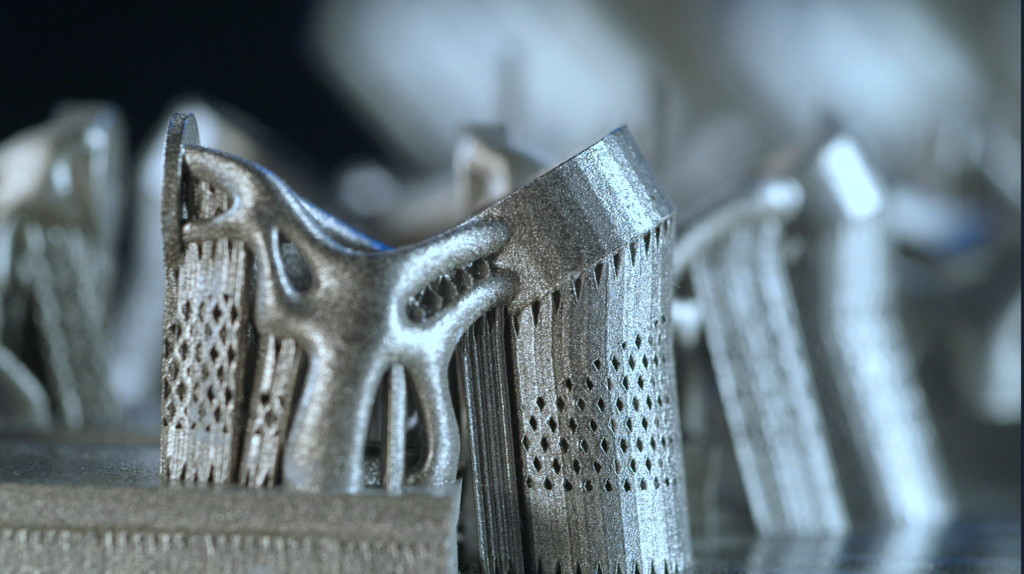The Additive Manufacturer Green Trade Association (AMGTA) has issued a report outlining a new method of passivating metal powder condensate waste from the 3D printing process.
Developed by Sintaviaa service bureau for aerospace parts, and powder specialist KBM Advanced Materials, the new process involves adding the powder waste to a resin material to create a non-hazardous mixture. This allows the waste to be safely transported to recycling plants, where it can be reclaimed from the resin matrix and reused in additive manufacturing.
According to Sherri Monroe, the AMGTA’s Executive Director, the latest report is a “must-read” for companies that operate with laser powder bed fusion (PBF) technologies.
She adds, “Not only does this new process reduce transportation costs, but it is also reversible, meaning that metal recycling companies can have unsoiled access to the underlying powder once it is received—thus allowing for the potential to recycle waste material that previously had to be put in a hazardous waste landfill.”
Promoting green 3D printing with AMGTA
Established in 2019 by founding members Sintavia, Taiyo Nippon Sanso Corporationand QC Laboratoriesthe AMGTA’s primary aim is to promote the environmental benefits of additive manufacturing.
In November 2020, a further 12 firms joined the associationincluding major industry players such as GE Additive, Materialise, Siemens Digital Industriesand EOS. More recently, Stratasys also became a member of the AMGTA As part of its commitment to sustainability and social change.
Since its inception, the AMGTA has published a commissioned university research paper on the environmental effects of metal 3D printing. The literature-heavy review consolidates existing academic studies on the environmental impacts of the technology, comparing it with traditional manufacturing and diving deeper into specific materials and processes.
The association has also previously commissioned a life-cycle assessment (LCA) comparing a 3D printed aerospace component to one that is traditionally manufactured. Conducted by the Rochester Institute of Technology (RIT), the LCA includes up to 18 different environmental indicators to quantify the positive impacts of 3D printing a low-pressure turbine bracket for a jet engine.
A new approach to waste transportation
Powder condensate is a term referring to the soot and powder spatter that’s sieved out of a reclaimed batch of metal 3D printing material. Sintavia currently mixes its powder condensate with sand and silicon oil before transportation. This eliminates any risks of ignitability, but the powder must still be transported as hazardous and the reclamation process is costly.
The latest AMGTA report explores a whole new passivation method, whereby condensate is mixed with a special KBM-supplied resin to make it non-hazardous, enabling transportation without regulatory restrictions. Once KBM receives the mixture, the firm separates the resin from the powder and reuses the metal to produce new powders or products.
Sintavia and KBM have already tested the passivation process with two different nickel alloys, Inconel and Haynes, reporting promising initial results. The team reported no hazardous situations during the tests, with the air quality in the testing environment remaining within acceptable limits throughout.
Although further tests will need to be carried out with different types of condensate waste, Sintavia and KBM have indeed been able to demonstrate that the process can be used to safely and cost-effectively transport metal condensate waste without logistical restrictions.
“I hope that other companies adopt this new process, as it will reduce their transportation costs since the underlying material is no longer hazardous,” said Brian Neff, the AMGTA’s Board Chair and CEO of Sintavia. “This report is an excellent example of the AMGTA taking a leadership role in developing sustainable use practices for additive manufacturing.”
The full report is titled ‘Evaluation of the passivation of Sintavia’s powder condensate using KBM’s resin process’.

Subscribe to the 3D Printing Industry newsletter for the latest news in additive manufacturing. You can also stay connected by following us on Twitterliking us on Facebookand tuning into the 3D Printing Industry YouTube Channel.
Looking for a career in additive manufacturing? Visit 3D Printing Jobs for a selection of roles in the industry.
Featured image shows metal aerospace components 3D printed by Sintavia. Photo via Sintavia.

